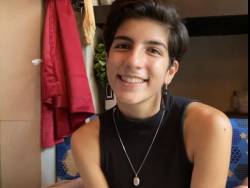Derek Chauvin Found Guilty Of George Floyd's Murder
On Tuesday, April 20, the 12-member jury in the case Derek Chauvin found the former Minneapolis police officer guilty on all the counts he faced over the death of George Floyd. The trial has been one of the most closely watched cases in recent memory, setting off a national reckoning on police violence and systemic racism.
Chauvin, 45, has been found guilty of unintentional second-degree murder, third-degree murder and second-degree manslaughter following a juror’s deliberation lasting 10 hours over two days.
With only his eyes visible as the rest of his face was hidden behind a surgical mask, Chauvin watched as the verdict was returned. As of the week of May 9, Chauvin’s sentencing is expected to take place in five weeks.
State sentencing guidelines recommend 12.5 years in prison for a conviction on unintentional second-degree murder for someone with no criminal history. But prosecutors could seek a sentence up to the maximum of 40 years if presiding Judge Peter A.Cahill determines there were aggravating factors.
George Floyd's brother, Philonise Floyd, hugged prosecutor Jerry Blackwell, Minnesota Attorney General Keith Ellison and others, according to pool reports from a journalist in the courtroom for NPR. He then shook hands with reports in the courtroom.
During the reading of the verdict, Philonise Floyd could be seen praying in the courtroom.
When asked by a reporter from The New York Times what he had been praying for, he answered: "I was just praying they would find him guilty. As an African American, we usually never get justice."
Floyd was a 46-year-old Black man from Houston who had moved to Minnesota three years earlier.
“He was a father and brother who idolized his mother, loved making music and had been a star athlete as a young man,” according to a report by NPR.
Floyd died on Memorial Day 2020 as a result of Chauvin pressing his knee on Floyd's neck for 9 minutes and 29 seconds, preventing proper breathing.
The Trial
Selected for his reputation as being a judge of “fair and decisive manner,” Cahill presided over the case and made the unusual decision to allow the trial to be broadcast live for the American people.
The prosecution argued that Floyd died as a direct result of Chauvin's actions: that due to Chauvin's weight on Floyd's neck and back while holding him in the prone position, Floyd died of low oxygen levels that caused a brain injury and arrhythmia, causing his heart to stop.
"He did what he did on purpose, and it killed George Floyd," said prosecutor Steve Schleicher.
Testimony in the case grew very controversial as several of the witnesses for the prosecution included numerous members of the Minneapolis police. Minneapolis Police Department Chief Medaria Arradondo and other members of his department testified that Chauvin's lengthy restraint of Floyd was not reasonable and violated the department's policies on use of force.
"There is an initial reasonableness in trying to get him under control in the first few seconds," Arradondo testified, "but once there was no longer any resistance, and clearly when Mr. Floyd was no longer responsive and even motionless, to continue to apply that level of force to a person prone out, handcuffed behind their back — that in no way, shape or form is anything that is by policy, is not part of our training and is certainly not part of our ethics or our values."
Chauvin's defense, meanwhile, argued that there was a range of potential factors in Floyd's death, including what it said was Floyd's enlarged heart, fentanyl and methamphetamine in his system and possibly carbon monoxide from squad car exhaust.
Above all, defense attorney Eric Nelson strove to inject doubt into the state's case. He framed Chauvin's actions as those of a "reasonable police officer" doing his job under stressful and chaotic circumstances.
Testimonies in the case ranged from topics of complex medical and forensic pathology to discussion of police training and officers' use of force.
There were moments of deep emotion, including from bystander Charles McMillian and the young woman identified in court as Darnella, who was 17 when she took video of the incident, according to April 20 reporting from CNN.
Hennepin County's medical examiner, Dr. Andrew Baker, testified that Floyd died from cardiopulmonary arrest resulting from "law enforcement subdual restraint and the neck compression." He said the manner of death was "homicide," meaning that someone else was involved in the death.
Compared with the prosecution, the defendant’s testimony was brief. Defense attorney Nelson called just six witnesses, including a retired Minneapolis police officer and retired paramedic who had interacted with Floyd during a 2019 traffic stop.
Based on accounts from NPR reporter Laurel Wamsley, the defense spent the most time questioning Dr. David Fowler, a retired forensic pathologist who testified that Floyd died from a sudden cardiac event and that opioids and methamphetamine in his system and possibly carbon monoxide poisoning played a role. He disputed the Hennepin County medical examiner's judgment that the manner of Floyd's death was "homicide" and said that it should have been classified as "undetermined," given the number of factors in play.
In the opinion of Baker, the medical examiner, "the law enforcement subdual restraint and the neck compression was just more than Mr. Floyd could take, by virtue of those heart conditions."
While fentanyl and heart disease may have contributed to Floyd's death, they were not the direct cause, Baker said. Other medical and forensic witnesses called by the prosecution agreed.
"Mr. George Floyd died from a cardiopulmonary arrest. It was caused by low oxygen levels. And those low oxygen levels were induced by the prone restraint and positional asphyxiation that he was subjected to," testified Dr. Jonathan Rich, a cardiologist.
Floyd's brother, Philonise Floyd, described their Houston childhood and told the court about how Floyd "was a leader in our household." Floyd's girlfriend, Courteney Ross, described her affection for him and their mutual struggle with opioid addiction.
The Charges
Chauvin faced three counts: second-degree murder — unintentional; third-degree murder; and second-degree manslaughter. Cahill's instructions to the jury focused on the elements of each count that must be met to reach a guilty verdict according to Minnesota state law.
Cahill’s instructions state: “Unintentional second-degree murder is defined as causing death without intent to do so, while committing or attempting to commit a felony offense. The maximum sentence for second-degree murder is 40 years.”
Cahill further stated that third-degree murder is causing death to an individual by "perpetrating an act imminently dangerous to others and evidencing a depraved mind without regard for human life," but without the intent to cause death. It carries a maximum sentence of 25 years.
Second-degree manslaughter is causing the death of another. "Culpable negligence, creating an unreasonable risk [in which the defendant] consciously takes the risk of causing death or great bodily harm to another individual” carries a maximum sentence of 10 years, Cahill said.
As news of the jurors' decision reached the American public relief and celebration arose. Philonise Floyd could be seen crying during a post-verdict news conference in Minneapolis while across the national celebrations in George Floyd’s name were held.
Police Chief Medaria Arradondo went on air later that evening reading statements saying, “This past year has been difficult and challenging yet [the police] have continued to show up and serve our community with the respect and dignity they deserve. We recognize that our community is hurting, and hearts are heavy with many emotions. However, I have hope. I hold hope that more justice will be seen from now on and that reform will come soon.”
*** On May 12th, Judge Cahill announced that he held “reasonable evidence to prove that there were aggravating factors involved in the actions of Derek Chauvin.”
This will mean that the former officer can be punished with maximum sentencing for his convicted crimes. Chauvin, who is being held in solitary confinement at a Minnesota prison, is scheduled to be sentenced on June 25. It is expected that Judge Cahill will sentence Chauvin to 30 years in prison. This is the maximum sentence Chauvin could serve as he holds no prior criminal history








